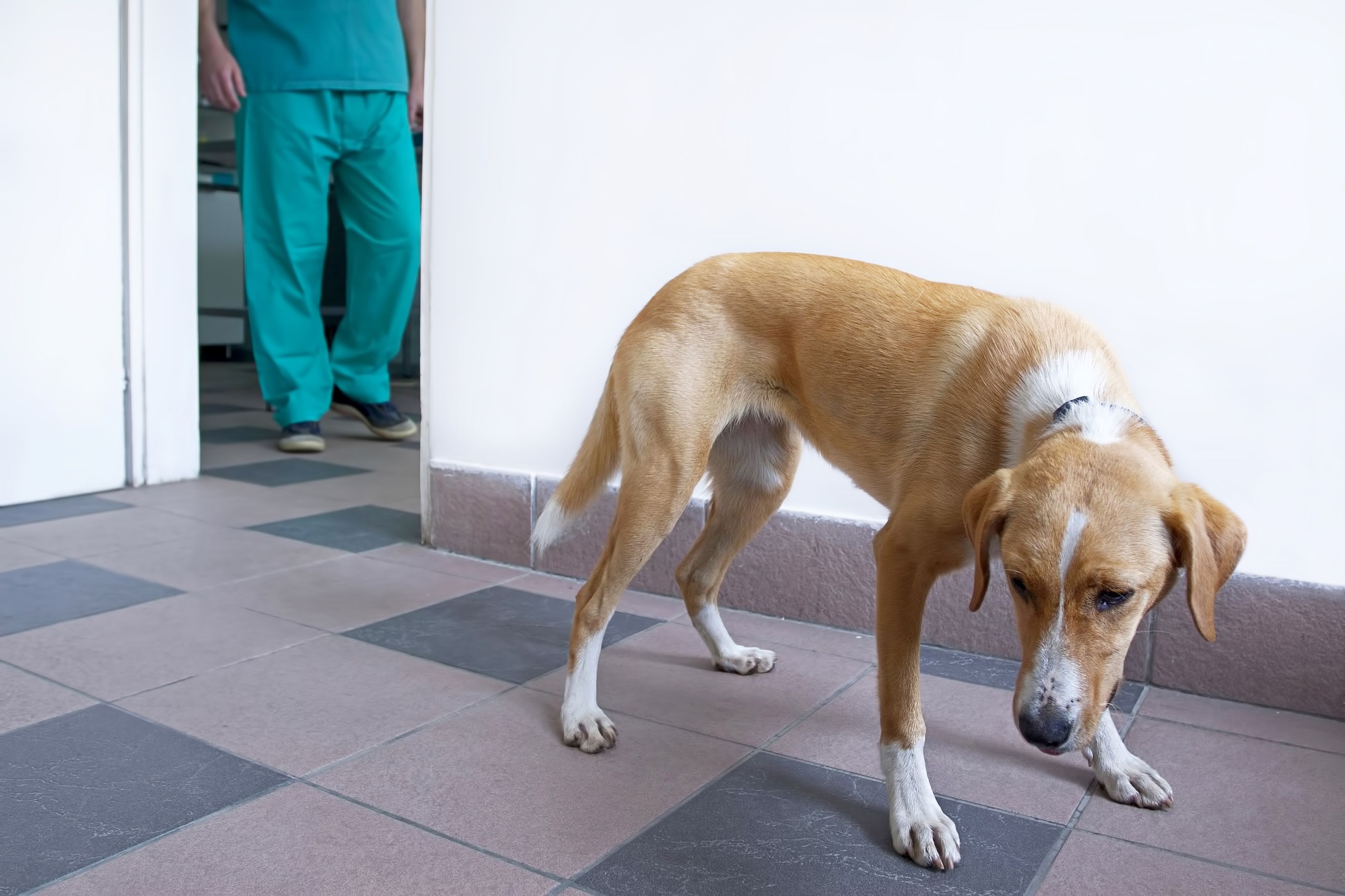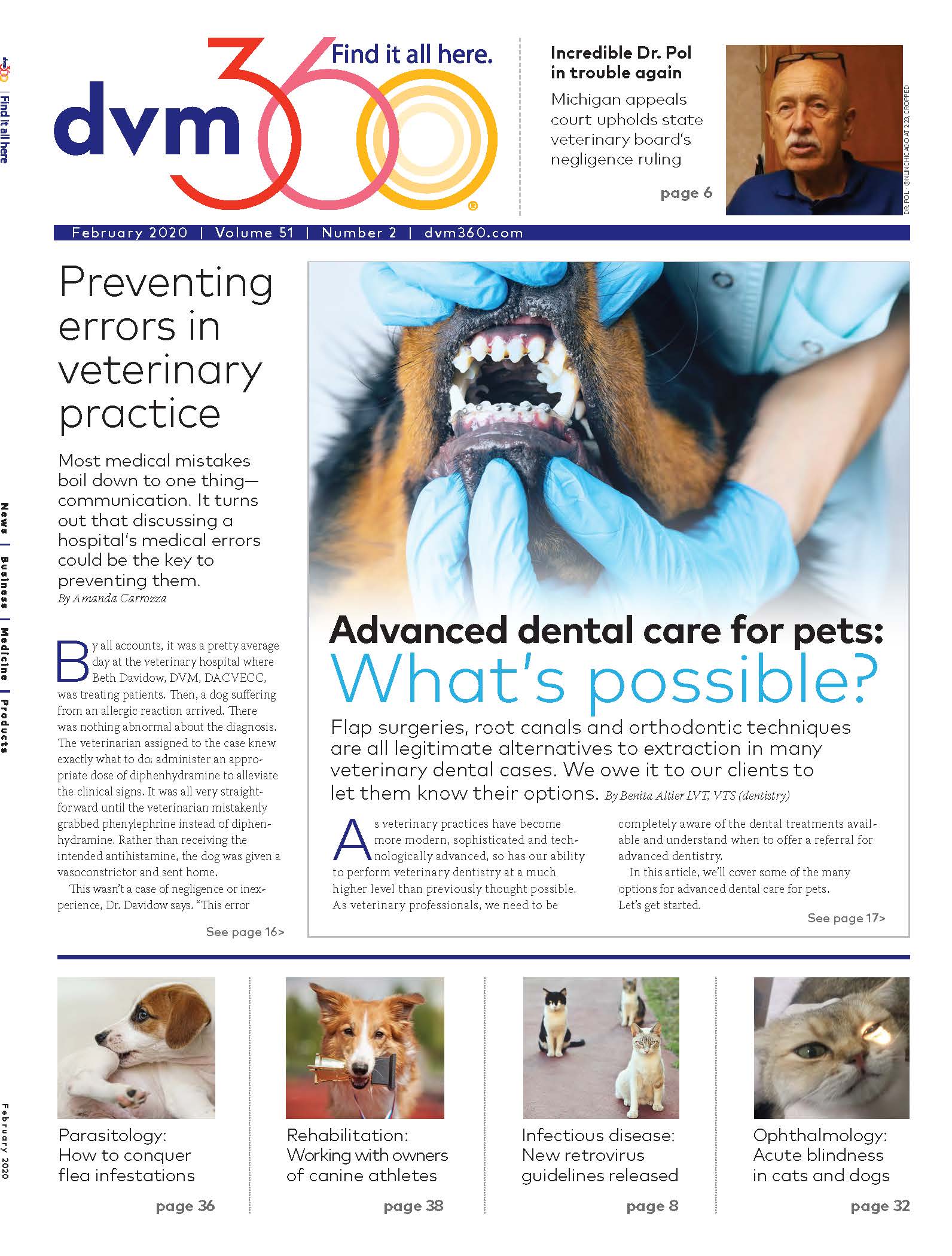VMX 2020—Conquering canine anxiety during veterinary visits
Veterinary behavior specialist Dr. Marie Hopfensperger shares tips for helping to combat canine anxiety in your clinic.
carol_anne / stock.adobe.com

For many dogs, the veterinary clinic can be the source of much fear, anxiety and stress. "About 10% of puppies show some evidence of fear at their first vet visit, and 60% to 80% of adult dogs show signs of fear or apprehension at the clinic," said Marie Hopfensperger, DVM, DACVB, at this year’s Veterinary Meeting & Expo (VMX), held this week in Orlando, Fla.
“We are all doing this because we love animals, but somehow 10% [of patients] start out being sketched out by us and then we increase it,” she said.
Dr. Hopfensperger, who runs the Michigan State University Veterinary Medical Center's Behavior Service, shared with attendees a few tips and techniques she uses to help combat canine anxiety and fear in the clinic.
It starts with navigating the lobby
Anxiety can start at home, on the ride to the clinic or in the parking lot, and can escalate when your patient finally gets into the lobby. “The lobby gets pretty wild and crazy,” said Dr. Hopfensperger, so she tries to tackle anxiety before the exam by:
- Moving anxious dogs directly into the exam room or a holding room
- Having owners check in and out without their dog
- Empowering client service representatives to recognize stress and intervene
For food-motivated dogs, use treats
Trying to take an anxious patient’s temperature or weighing them on the scale can be challenging, so for your food-motivated patients, treats can be useful, Dr. Hopfensperger said. Here are her suggestions:
- Try spreading peanut butter on a yoga mat, which can easily be put in the washing machine after each use.
- Treat-dispensing toys can be good “especially for those fast lickers."
- Spread cheese and/or peanut butter on a dry erase board, which is easy to clean.
- Bite-sized treats can also help with dogs that have issues with resource guarding.
Ask instead of command
Just like people, Dr. Hopfensperger says that, although it's unproven, she believes that dogs can comprehend questions.
“They understand what the context of a question is, that it’s an option, not a demand, not a command," she said. "I’m really asking a question and the pet has a choice…. I ask are you ready? or Do you wanna?” She says this form of consent training can take just a few minutes for patients to learn, especially food-motivated dogs. For patients that aren’t food-motivated, you can try petting as a reward and, if that doesn’t work, drugs may be necessary for your more anxious patients.
To find out more about how to help combat canine anxiety and fear in your clinic, check out this handout.
